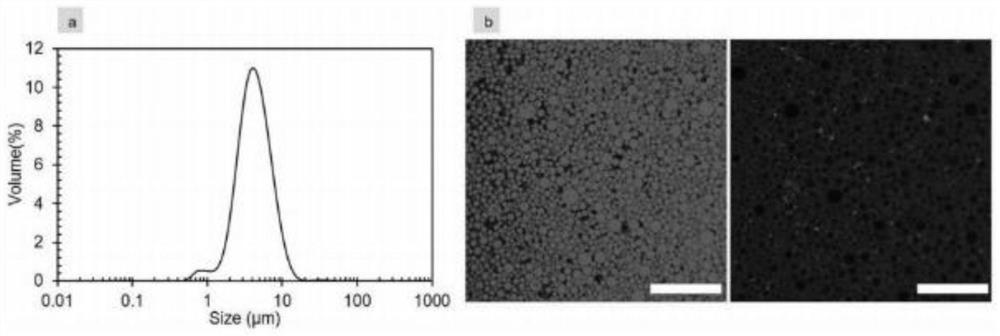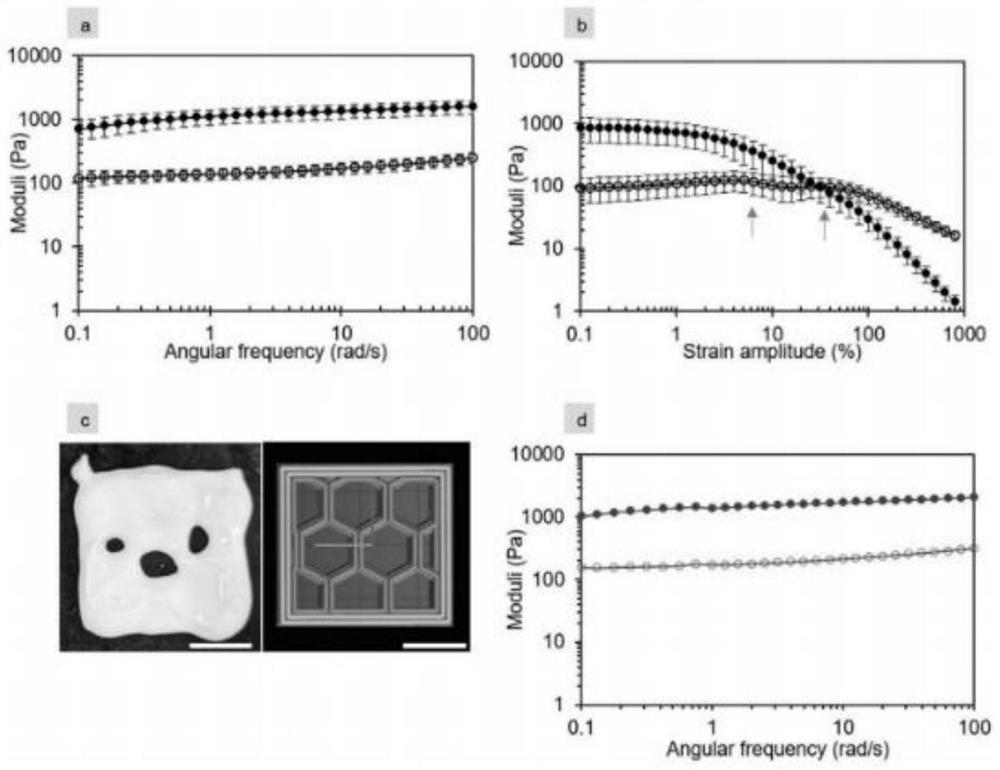Method for preparing edible 3D printing material by using chickpea protein
A 3D printing and chickpea technology, which is applied in the field of elastic-plastic 3D printing materials, can solve the problems of reducing the application range, the problem of molecular biocompatibility of emulsions, and reducing the biocompatibility of materials, and achieves the elimination of pretreatment. and post-processing effects
- Summary
- Abstract
- Description
- Claims
- Application Information
AI Technical Summary
Problems solved by technology
Method used
Image
Examples
Embodiment 1
[0055] One embodiment of the present invention is: a method of making a 3D printing material using a horn mouthpein protein, the method comprising:
[0056] 1) Purification of horn mouthpezin proteins
[0057] Extract the protein from the hawk mouthpener, and the commonly used alkali-equivalent electrotodes are used to obtain a gangmean protein supernatant;
[0058] Dry the horn mouthpezine seeds into coarse powder in the mixer, the solid and water ratio 1: 10, the gawagle powder is added, and the solution is added to the 0.2 mNOH solution; after soaking 1.5 h, the slurry is fastest in the stirrer. After stirring for 1min, the resulting slurry precipitates the solid after centrifugation of 10000 R for 25 minutes, separating the protein supernatant.
[0059] The protein is precipitated in a hydrochloric acid solution of a pH of 4.7; standing for 0.5 h, 10000r centrifugation for 25min, collecting the precipitate; 1: 10 W / W) to reach pH = 7, then freeze the solution, obtained powde...
Embodiment 2
[0087] One embodiment of the present invention is: a method of making a 3D printing material using a horn mouthpein protein, the method comprising:
[0088] 1) Purification of horn mouthpezin proteins
[0089] Extract the protein from the hawk mouthpener, and the commonly used alkali-equivalent electrotodes are used to obtain a gangmean protein supernatant;
[0090] The chickpea seeds are dry to coarse powder in the mixer, and the solid is soaked with the water ratio of 1:10, and 0.5 mNaOH solution is continuously stirred; soak 2 h, the slurry is stirred in the stirrer at the fastest speed At 2 min, the resulting slurry was centrifuged at 100,000 to precipitate the solid after 30 minutes, and the protein supernatant was separated.
[0091] The protein is precipitated in a hydrochloric acid solution of a pH of 4.8; standing for 1 h, 10000r centrifuge for 30 min, collecting the precipitate; 1: 10 W / W) to reach pH = 7, then freeze the solution, the powder referred to It is a horn b...
Embodiment 3
[0117] One embodiment of the present invention is: a method of making a 3D printing material using a horn mouthpein protein, the method comprising:
[0118] 1) Purification of horn mouthpezin proteins
[0119] Extract the protein from the hawk mouthpener, and the commonly used alkali-equivalent electrotodes are used to obtain a gangmean protein supernatant;
[0120] The chickpea seeds were done into coarse powder in the mixer, and the solid and water ratio were soaked with the gawagm powder, and 0.7 mNaOH solution was continuously stirred; so soaking 2.5 h, the slurry was fastest in the stirrer. Stirring 3 min, the resulting slurry precipitates the solid after centrifugation of 10000 R for 35 minutes, separating the protein supernatant.
[0121] The protein is precipitated in a hydrochloric acid solution of a pH of 4.9; standing for 1.5 h, 10000r centrifuge for 35min, collecting precipitation; 1: 10W / W) reaches pH = 7, then freeze the solution, obtained powder It is simply refer...
PUM
| Property | Measurement | Unit |
|---|---|---|
| Diameter | aaaaa | aaaaa |
| Diameter | aaaaa | aaaaa |
| Diameter | aaaaa | aaaaa |
Abstract
Description
Claims
Application Information
 Login to View More
Login to View More - R&D
- Intellectual Property
- Life Sciences
- Materials
- Tech Scout
- Unparalleled Data Quality
- Higher Quality Content
- 60% Fewer Hallucinations
Browse by: Latest US Patents, China's latest patents, Technical Efficacy Thesaurus, Application Domain, Technology Topic, Popular Technical Reports.
© 2025 PatSnap. All rights reserved.Legal|Privacy policy|Modern Slavery Act Transparency Statement|Sitemap|About US| Contact US: help@patsnap.com



